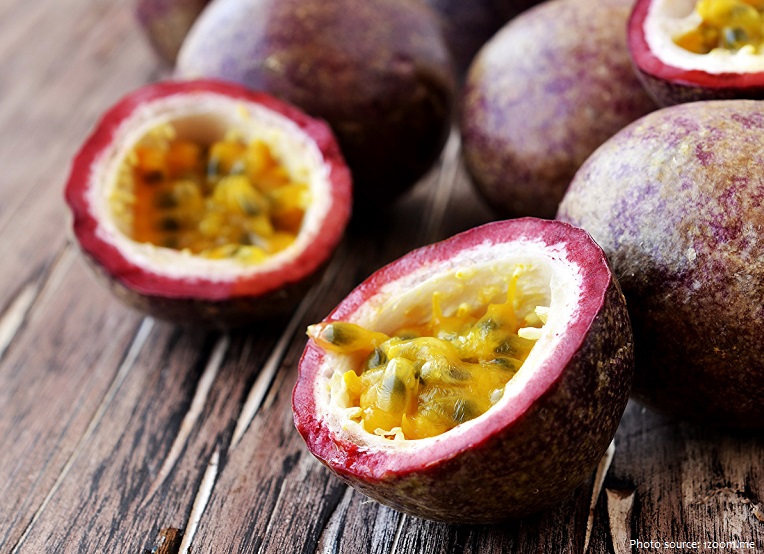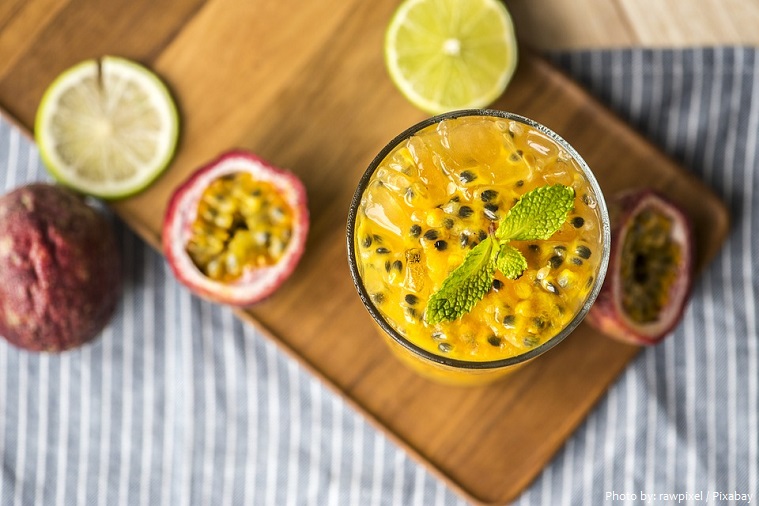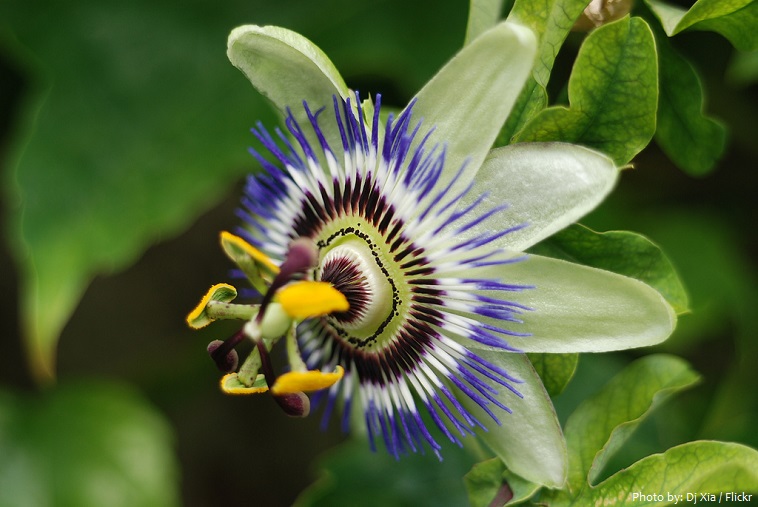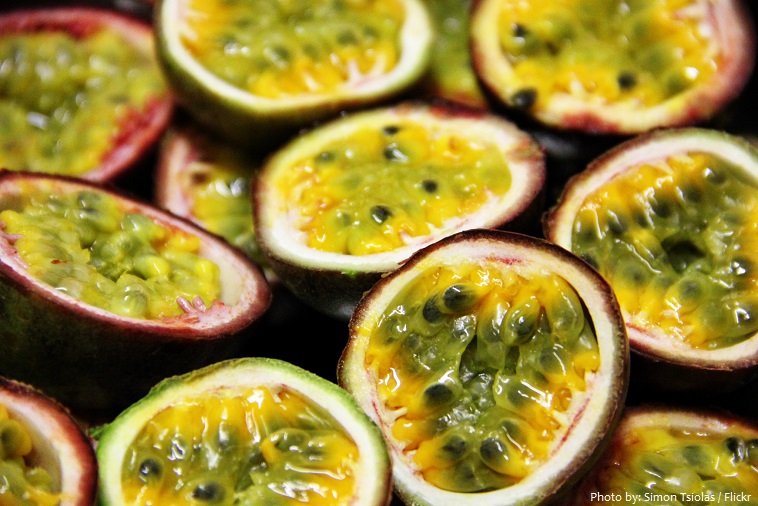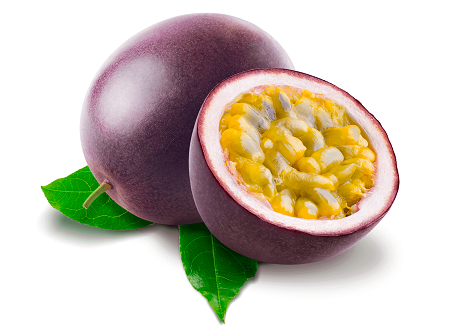The passion fruit is a pepo, a type of berry, round to oval, with a soft to firm, juicy interior filled with numerous seeds.
Its common names also include passionfruit (English), maracujá (Portuguese) maracuyá or parcha (Spanish), grenadille or fruit de la passion (French) or lilikoʻi (Hawaiian) and mburukuja (Guaraní).
It is native to southern Brazil through Paraguay and northern Argentina.
Around 1700, the name was given by Spanish missionaries in Brazil as an educational aid while trying to convert the indigenous inhabitants to Christianity.
The flower of the Passiflora edulis was known by Spanish missionaries as the Flor de las cinco lagas (flower of the five wounds) because it illustrated the crucifixion of Christ. Hence, the name passion fruit was originated.
Today it is grown commercially in tropical America and the Caribbean. Within the United States, it is grown in Florida and California.
The passion fruit vine can grow in a variety of soil environments. The vine itself is strong, woody, and can climb up to 4.5 meters (15 feet) long. The vine leaves are dark green, with a shiny upper surface.
Usually the vine produces a flower from 5 to 7.5 cm (2 to 3 in) wide at each node. The flower has 5 oblong, green sepals and 5 white petals. The sepals and petals are from 4 to 6 mm (0.16 to 0.24 in) in length and form a fringe. The base of the flower is a rich purple with 5 stamens, an ovary, and a branched style. The styles bend backward and the anthers, which are located on top of the styles, have a very distinct head.
The fruit produced is entirely fleshy (making it botanically a berry), and is spherical to ovoid. It is 4 to 7.5 cm (1.6 to 3 in) in diameter; purple fruits are smaller, weighing around 35 grams (1.2 ounce), while yellow fruits are closer to 80 grams (2.8 oz). The smooth, leathery rind is from 9 to 13 mm (0.35 0.5 oz) thick, including a thick layer of pith. Within the berry, there are typically 250 black seeds, each 2.4 mm (0.09 oz) in length. Each seed is surrounded by a membranous sac filled with pulpy juice. The flavor of the juice is slightly acidic and musky.
Because of its unique, intense, aromatic flavor characteristics, passion fruit is a “natural” ingredient for juice blends.
There are 97 calories in 100 grams (3.5 ounces) of the passion fruit.
Passion fruit is a good source of nutrients, especially fiber, vitamin A, vitamins B and vitamin C.
Passion fruit health benefits includes providing essential nutrients to the body, supporting body immune system, may help to fight cancer, support digestion, treat gastrointestinal disorder and reduces bad cholesterol. Other benefits includes improving blood circulation, supporting bone health, treating respiratory conditions, curing insomnia and acting as natural mood enhancer.
In Hawaii, where it is known as liliko’i, passion fruit can be cut in half and the seeds scooped out with a spoon.
In Colombia, it is one of the most important fruits, especially for juices and desserts.
In Mexico, passion fruit is used to make juice or is eaten raw with chilli powder and lime.
In Paraguay, passion fruit is used principally for its juice, to prepare desserts such as passion fruit mousse, cheesecake, ice cream, and to flavour yogurts and cocktails.
In Sri Lanka, passion fruit juice is one of the most popular refreshments.
In South Africa it is used to flavour yogurt and soft drinks such as Schweppes’ “Sparkling Granadilla”.
In East Africa, passion fruit is used to make fruit juice and is commonly eaten as a whole fruit.
Passion fruit flower is the national flower of Paraguay.
